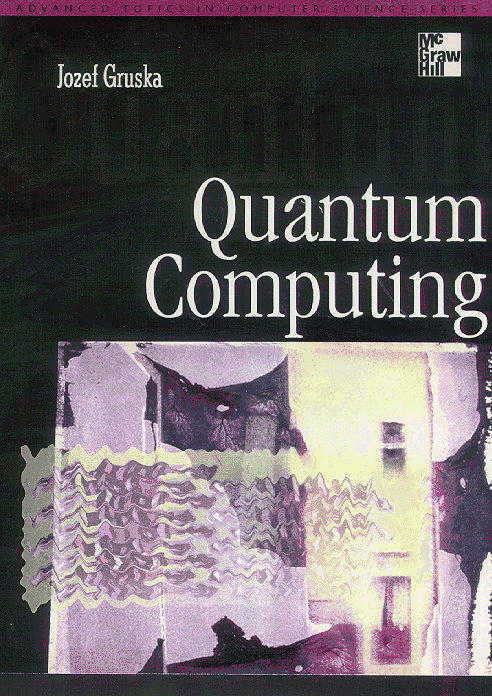
Jozef Gruska
Amazon
(online ordering)
Overview
Contents
Preface
About chapters
Figures
Corrections
About author
Related links
ISBN: 0-07-709503-0
Published: May 1999
Binding: Softcover
Pages: 439 - 246x189
Price: £34.99, DM73

Book + it's Web extensions
The book contains basic systematic presentation of the new and exciting field of quantum information processing. However, since this is enormously fast developing area the printed book is regularly extended and updated through files additions.ps and updatings.ps, to keep the reader informed about new developments.
Overview
In quantum computing, we witness an exciting and very promising merge of two of the deepest and most successful scientific and technological developments of this century: quantum physics and computer science. In spite of the fact that its experimental developments are in their infancy, there has already been a variety of concepts, models, methods and results obtained at the theoretical level that clearly have lasting value.These concepts, methods and results are the main subject of the book. Knowledge from two areas is of importance for understanding the basic developments in quantum computing: namely, quantum physics and theoretical computer science. The book provides elements of both, and concentrates on the presentation of concepts, models, methods and results mainly from a computing point of view. No previous knowledge of quantum mechanics is required.By making no assumption of previous knowledge of quantum mechanics, the book explains the principles and also the mysteries of the basic physical phenomena behind quantum computing. It allows a computer scientist to understand the problems, models, methods and main results of quantum information processing.By making minimal assumptions of theoretical computer science results, the book allows a physicist to understand the problems, models, methods and results of quantum computing from a computer science point of view.The large number of examples, figures and, especially, exercises provide ample opportunity for students and readers to practice the material learned.An extensive Appendix provides a concentrated presentation of some of the basic frameworks within which quantum computing develops; quantum mechanics, Hilbert spaces and computational complexity theory.

